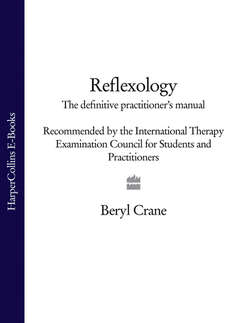Читать книгу Reflexology: The Definitive Practitioner's Manual: Recommended by the International Therapy Examination Council for Students and Practitoners - Beryl Crane - Страница 28
Meridians and nerves
ОглавлениеThe philosophy of acupuncture and acupressure relies on the connection between a specific area on the skin and a specific organ (see chapter 1). Traditionally these are through the meridian pathways that link the organs. According to some TCM authors, these meridians are not the same as the neural pathways; however, that is a theory expounded by some Western acupuncturists. For example, according to Dr Felix Mann in Acupuncture, How it is Used Today: ‘Nowadays acupuncture can be explained by a wave of electrical depolarisation that travels along a nerve’. This author also refers to the similarity between the TCM idea of Qi transmission along the meridians being like water flowing along a river bed, and the propagation of a nerve impulse along a nerve. Further on in the same book he states:
The mechanism of acupuncture is elusive. Nevertheless, I have developed the following theory which I think will soon be generally recognised as the scientific basis of acupuncture – albeit with modifications and considerable clarification in detail.
If a patient has a pain in the head or neck, it may under certain circumstances be alleviated in one second, by putting an acupuncture needle into the correct acupuncture point in the foot. This speed of conduction, from one end of the body to the other, is only possible in the nervous system. It would take about half a minute for the blood to flow such a distance, and the lymphatic system is even slower.
Acupuncture is based on the fact that stimulating the skin has an effect on the internal organs and other parts of the body.
Many of the meridians follow the line of a nerve, so the neural pathways must be involved; the above theory is open to conjecture, but the evidence is almost conclusive. The same hypothesis is appropriate for reflexology. By stimulating the precise point a response is felt in the body. In an example that Dr Mann gave, if a person had a headache one would work on the brain reflex and head-related areas; the trigeminal nerve reflex has a definite effect on head-related problems, and these points are on the big toe. Also the liver reflex would be worked as the toxin levels would be quite high; this point is on the plantar area of the foot, but there is no meridian depicted here, showing that the response obtained is from the nerve pathways.
Looking at each meridian in detail reveals that many of them follow nerve pathways; these connect with all the structures along their course: the bones and the deeper muscular branches of their respective muscles, organs, arteries and veins. Thus the pathway could be seen as a direct line to the area of the problem and everything connecting with this pathway is potentially helped. Also, a particular nerve pathway goes in one direction, but a two-way transmission is set up through returning nerve pathways. The following looks at each meridian in detail, typical associated disorders and the nervous connections.
